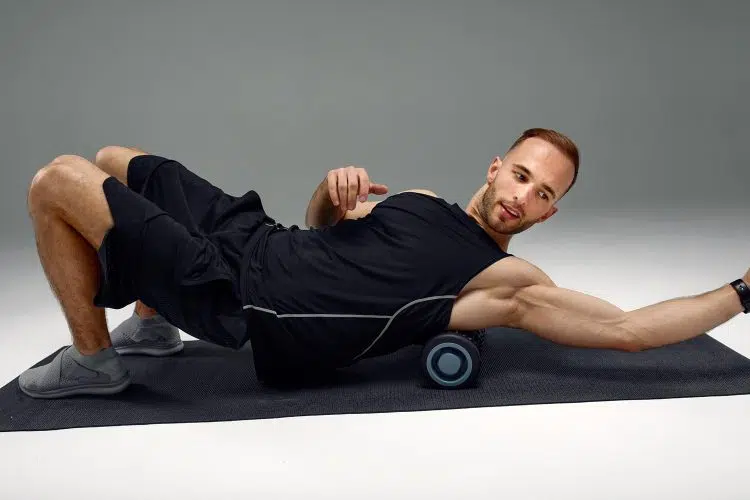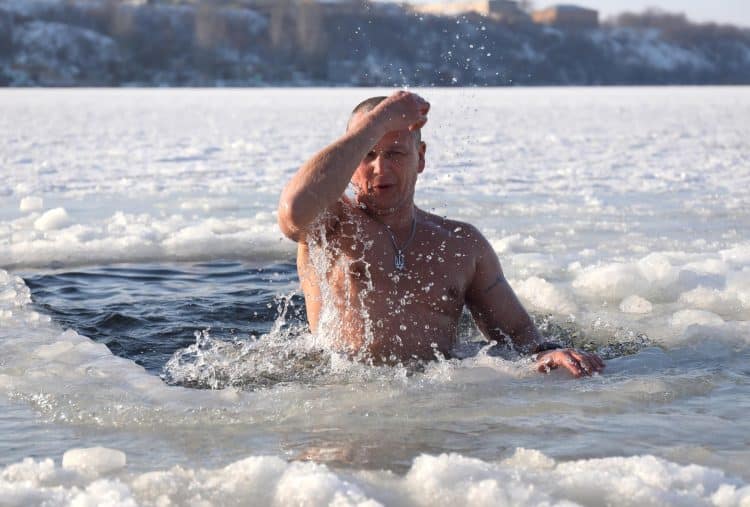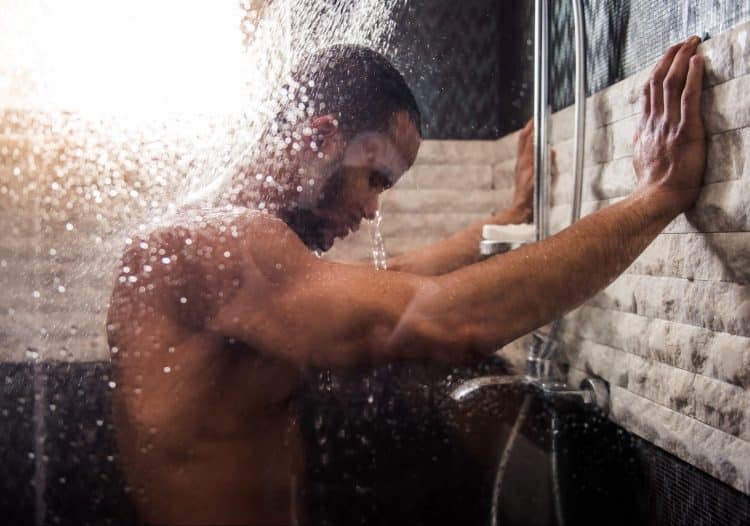Exercise is one of the best things you can do for your body. In fact, it’s true to say that working out has a medicinal effect, boosting many aspects of your health.
Exercising regularly offers a laundry list of physical and mental benefits, including:
- Reduced stress
- Improved mood
- Enhanced cognitive function
- Increased self-esteem
- More stable blood glucose
- Improved cardiovascular health
- Lower blood pressure
- Reduced symptoms of depression and anxiety
- Enhanced functional strength
- Better flexibility and mobility
- Increased endurance
- Improved bone density
- Easier weight management
- Enhanced immune function
However, there is a fine line between exercising enough to achieve optimal results and doing so much that you become overly tired, injured, or overtrained.
But what if you could improve your ability to cope with the demands of regular exercise? This would allow you to recover better between workouts so that you could train harder, longer, and more frequently.
As a 30-yearveteran personal trainer, I know that training is only part of what you must do to achieve your health and fitness goals. You also need to pay attention to what you do between workouts. While often boring, it’s these out-of-the-gym practices that can make or break your progress.
After all, as many fitness experts say, “There is no such thing as overtraining, just under-recovering.” While this statement is an oversimplification, it highlights the role that recovery plays in any effective training program.
Level Up Your Fitness: Join our 💪 strong community in Fitness Volt Newsletter. Get daily inspiration, expert-backed workouts, nutrition tips, the latest in strength sports, and the support you need to reach your goals. Subscribe for free!
In this article, I reveal the three most practical and powerful recovery techniques every exerciser should use to optimize performance and prevent injury.
Prioritize Sleep
Life can be hectic, with many demands on your time and energy. Unfortunately, this means that, for many people, sleep has become a luxury. Rather than racking up the recommended 7-9 hours of sleep per night, many people get by on considerably less, leading to chronic sleep deprivation.
Not getting enough sleep can have a massive impact on your workouts and your ability to recover from them. Regardless of what you are training for, be it weight loss, health, or building muscle and strength, sleep is critical for continued progress.
How Lack of Sleep Impairs Recovery
While lack of sleep obviously makes you feel tired, its effects run much deeper. And while you can pep yourself up with a cup of coffee or shot or pre-workout, not getting enough sleep will undermine your progress in several ways (1) :
Decreased testosterone – this critical hormone drives muscle growth and is also a potent fat burner. Low testosterone impairs muscle growth and makes it harder to burn fat and get lean.
Related: 10 Proven Ways to Naturally Boost Testosterone
Decreased human growth hormone and insulin-like growth factor – like testosterone, HGH, and IGF-1 are anabolic hormones involved in muscle repair and growth. Reduced levels of these hormones mean slower recovery between workouts, leading to slower progress.
Increased cortisol – lack of sleep is a source of stress, which increases cortisol production. Cortisol is a catabolic hormone that causes the breakdown of muscle tissue. While low levels of cortisol are unavoidable, chronic elevation will impede recovery.
Increase inflammation – sore joints? Achy muscles? Too little sleep could be the cause. Insufficient sleep can cause increased inflammation, making minor aches and pains much more severe. Excessive inflammation can also impair muscle growth and recovery and could even increase your risk of injury.
Increased insulin resistance – chronic sleep deprivation increases insulin resistance. This prevents the nutrients from your food from entering your muscle cells, impairing recovery, repair, and growth. Insulin resistance also primes your body for fat storage and makes it much harder to burn fat and get lean.
Learn more about The Importance of Sleep for Building Muscle and Losing Fat in this in-depth article.
Getting more sleep is not always easy and often requires a change in lifestyle, e.g., setting and sticking to an earlier bedtime. However, sleep is so critical to recovery that you should consider it the foundation on which your health and fitness are built.
Foam Rolling
Massage is the oldest recognized medical treatment. In fact, it’s not just old – it’s instinctive. After all, what do most people do when they’re in pain? Typically, they rub the affected area, which is a very simple form of massage.
There are numerous recovery-boosting benefits of massage, including:
- Improved circulation
- More rapid removal of metabolic waste products
- Reduced muscle tension
- Improved flexibility and mobility
- Lower stress and cortisol
- Reduced inflammation
- Less post-exercise muscle pain
- Improved mood
- Enhanced sleep
- Increased immunity
With so many benefits, it’s no wonder that top athletes from all sports include massage in their recovery routines. Some employ and even travel with personal massage therapists so they never miss a treatment.
There are many types of massage, including deep tissue, sports, Swedish, Thai, and lymphatic drainage. However, you’ll need the services of a trained massage therapist to enjoy their benefits. Massages can also be expensive, which puts them out of the reach of many exercisers.
That said, you can achieve a very similar effect using a simple, cheap foam roller.
What is Foam Rolling?
Foam rolling is a form of massage known as self-myofascial release, or SMR for short. With foam rolling, you lie on your roller and use your body weight to compress, stretch, and otherwise manipulate your muscle tissue and fascia. Fascia is the tough layer of connective tissue that surrounds, separates, and links all your muscles and organs.
Foam rolling has been shown to be as good as conventional massage for enhancing recovery. It can even help reduce the duration and severity of post-workout delayed-onset muscle soreness (DOMS) (2).
Best of all, you can buy a form roller for less than the price of a single massage. And, because they’re light and portable, you can take your roller to the gym and use it as part of your cooldown. Focus on the areas you have just trained to enhance recovery.
Level Up Your Fitness: Join our 💪 strong community in Fitness Volt Newsletter. Get daily inspiration, expert-backed workouts, nutrition tips, the latest in strength sports, and the support you need to reach your goals. Subscribe for free!
It can take a while to become proficient at foam rolling, and initially, it can be uncomfortable. However, after a few sessions, any tenderness will subside, and it will become something you look forward to rather than dread.
Here’s a full-body foam roller routine to try:
Foam rolling is an excellent alternative to massage. For many, it’s far more accessible, and the cost is minimal. Using a foam roller immediately after training can help reduce muscle soreness while enhancing recovery. 5-10 minutes is all you need!
Cold Therapy
Extreme cold is something that most people try to avoid. However, a growing body of evidence suggests cold exposure has several notable benefits, not least enhancing recovery after exercise (3). This is why you’ll often see athletes and other hardcore exercisers sitting in ice baths or using special cryotherapy chambers.
There are several ways in which cold therapy can enhance recovery after training. These include:
- Decreased post-training muscle soreness
- Reduced joint and muscle pain
- Increased circulation
- Quicker return to homeostasis
- Faster perceived recovery after exercise
- Reduced inflammation
- Increased energy
- Improved immunity
- Deeper, longer sleep
While ice baths are one the most recognized forms of cold therapy, they’re also probably the least accessible. After all, not many gyms have tubs of ice for you to lie in. The good news is that you can achieve a similar effect by turning your shower from hot to cold and standing under the chilly water for several minutes.
Related: The Ice Bath Ultimate Guide — Should You Take the Plunge?
How to Take a Cold Shower
In my experience, very few people enjoy cold showers. Going from a hot, sweaty workout to standing under a stream of icy water is a big shock to the system. Consequently, despite the proven benefits, cold showers are something that many folks only do once.
That’s a shame because consistent cold showers can have a significant impact on your recovery and subsequent exercise performance.
Follow these steps to make cold showers more comfortable and enjoyable.
1. Cool Down Properly
Don’t jump straight under a cold shower after your workout. Instead, start to lower your body temperature with a thorough cooldown. Begin with 5-10 minutes of easy, low-impact cardio, followed by some gentle static stretches for your major muscles. Enhance recovery with a few minutes of foam rolling.
Related: The Best Post-Gym Cool Down Exercises
2. Lower the Temperature Gradually
Start with a lukewarm shower and then lower the temperature gradually. This will come as much less of a shock than stepping straight into an icy shower. That said, if you can tolerate it, it’s perfectly okay to start with a low-temperature setting. Just do what feels most comfortable.
3. Splash, Don’t Spray
Cold shower newbies will find splashing water onto their bodies much more comfortable than standing under a spray of freezing water. Cup your hands and throw cold water over your legs, chest, abdomen, and back. Only step under the jet when you feel you have acclimated to the temperature of the water.
4. Use Localized Water Jets
Get more from your cold shower by directing the water at the muscles you have just been training. For example, aim it at your chest, back, shoulders, and arms after your next upper body workout. This should have a localized DOMS-reducing and recovering-enhancing effect.
5. Increase the Duration Gradually
Don’t worry if you can only tolerate a few seconds under the freezing water; even a short cold shower will be beneficial. However, regardless of how short your first cold shower is, gradually increase the duration over the coming weeks. Add five seconds per shower, and you’ll be up to several minutes by the end of the month.
6. Try Contrast Showers
A contrast shower involves alternating bursts of cold and warm water. The cold causes your blood vessels to constrict, while the warm water makes them open up again.
This creates a pumping effect that helps enhance circulation, removing metabolic waste products from your muscles. Try 30 seconds of hot alternated with 30 seconds of cold to experience this for yourself.
Some studies suggest contrast showers are even more effective than cold showers for enhancing recovery and preventing DOMS (4).
Related: How to Use Cold Showers to Protect Yourself from Post-Workout Fatigue
While cold showers may take some getting used to, research suggests they can have a noticeable impact on post-exercise soreness and energy. Warm showers are undoubtedly more relaxing, but lowering the temperature could help you recover faster between workouts.
Closing Thoughts
Your ability to recover between workouts is critical to your fitness success.
Despite this, some exercisers pay very little attention to recovery, sabotaging their progress. Those same people often label themselves as hardgainers or workout non-responders when, in fact, they’re simply ignoring the importance of things like sleep and good nutrition.
While there are many things you can do to enhance your recovery, the three techniques listed in this article are among the most convenient and impactful. Each one involves very little time, effort, or cost but will have a significant impact on your progress.
So, get more sleep, add foam rolling to your cooldowns, and finish your workouts with a cold shower. Together, these strategies will boost recovery so you can get back in the gym sooner.
Next read: 8 Ways to Speed Up Recovery After Training
References:
- Dáttilo M, Antunes HKM, Galbes NMN, Mônico-Neto M, DE Sá Souza H, Dos Santos Quaresma MVL, Lee KS, Ugrinowitsch C, Tufik S, DE Mello MT. Effects of Sleep Deprivation on Acute Skeletal Muscle Recovery after Exercise. Med Sci Sports Exerc. 2020 Feb;52(2):507-514. doi: 10.1249/MSS.0000000000002137. PMID: 31469710.
- Pearcey GE, Bradbury-Squires DJ, Kawamoto JE, Drinkwater EJ, Behm DG, Button DC. Foam rolling for delayed-onset muscle soreness and recovery of dynamic performance measures. J Athl Train. 2015 Jan;50(1):5-13. doi: 10.4085/1062-6050-50.1.01. Epub 2014 Nov 21. PMID: 25415413; PMCID: PMC4299735.
- Xiao F, Kabachkova AV, Jiao L, Zhao H, Kapilevich LV. Effects of cold water immersion after exercise on fatigue recovery and exercise performance–meta-analysis. Front Physiol. 2023 Jan 20;14:1006512. doi: 10.3389/fphys.2023.1006512. PMID: 36744038; PMCID: PMC9896520.
- Bieuzen F, Bleakley CM, Costello JT. Contrast water therapy and exercise-induced muscle damage: a systematic review and meta-analysis. PLoS One. 2013 Apr 23;8(4):e62356. doi: 10.1371/journal.pone.0062356. PMID: 23626806; PMCID: PMC3633882.












